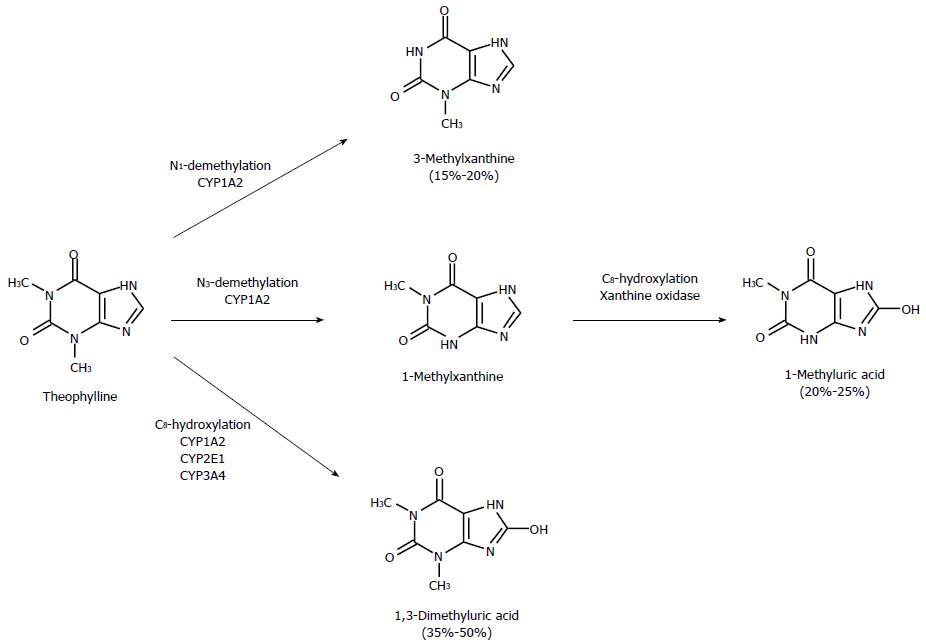Copyright
©The Author(s) 2016.
World J Gastroenterol. Jan 21, 2016; 22(3): 1260-1278
Published online Jan 21, 2016. doi: 10.3748/wjg.v22.i3.1260
Published online Jan 21, 2016. doi: 10.3748/wjg.v22.i3.1260
Figure 1 Metabolic pathways of theophylline.
Numbers in parentheses indicate percentages of urinary metabolites in adult humans. Theophylline is hydroxylated at the C8 position to form 1,3-dimethyluric acid and demethylated at the N1 and N3 positions, to yield 3-methylxanthine and 1-methylxanthine, respectively. The latter undergoes subsequent oxidation, by xanthine oxidase, to 1-methyluric acid. CYP1A2 is responsible for about 80% of theophylline metabolism[30].
- Citation: Palatini P, De Martin S. Pharmacokinetic drug interactions in liver disease: An update. World J Gastroenterol 2016; 22(3): 1260-1278
- URL: https://www.wjgnet.com/1007-9327/full/v22/i3/1260.htm
- DOI: https://dx.doi.org/10.3748/wjg.v22.i3.1260









